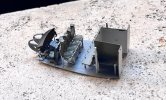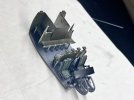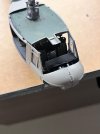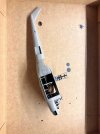Waspie
SMF Supporter
Oh but they do Jacko!!!!! Helicopters are a mix of Aluminium alloy and Magnesium alloys. As such suffer from dissimilar metal corrosion. Even something like a FMJ can kick off corrosion. (rust). Aluminium is coated in 'Alacrome' to help prevent rust, but the slightest scratch can induce it. Magnesium is coated but I forget the treatment. These lighter alloys really suffer near salt water.I would keep it as you painted it: grey floor with olive rear wall.
Keep it simple: this is your first model, and for now it’s probably better to actually paint and finish it instead of getting bogged down in all kinds of technical stuffThat said, dirt on the floor is simple enough: take a somewhat large brush (say, about 3 or 4 mm diameter), dip it into some earth-coloured paint, and then wipe of the paint on a piece of cloth or paper from a kitchen roll. Then lightly go over the floor of the model with this, so that the paint will catch on the higher parts of the floor without actually covering well. This is known as drybrushing because you’re painting with a brush that is (almost) dry. It takes a little practice, but it’s a very useful technique to master.
As for rust: helicopters like this are made almost completely of aluminium — they don’t rust(OK, OK, technically all bare aluminium you will ever see is covered in oxide, but it’s not the kind of people think of when they talk about rust
)




